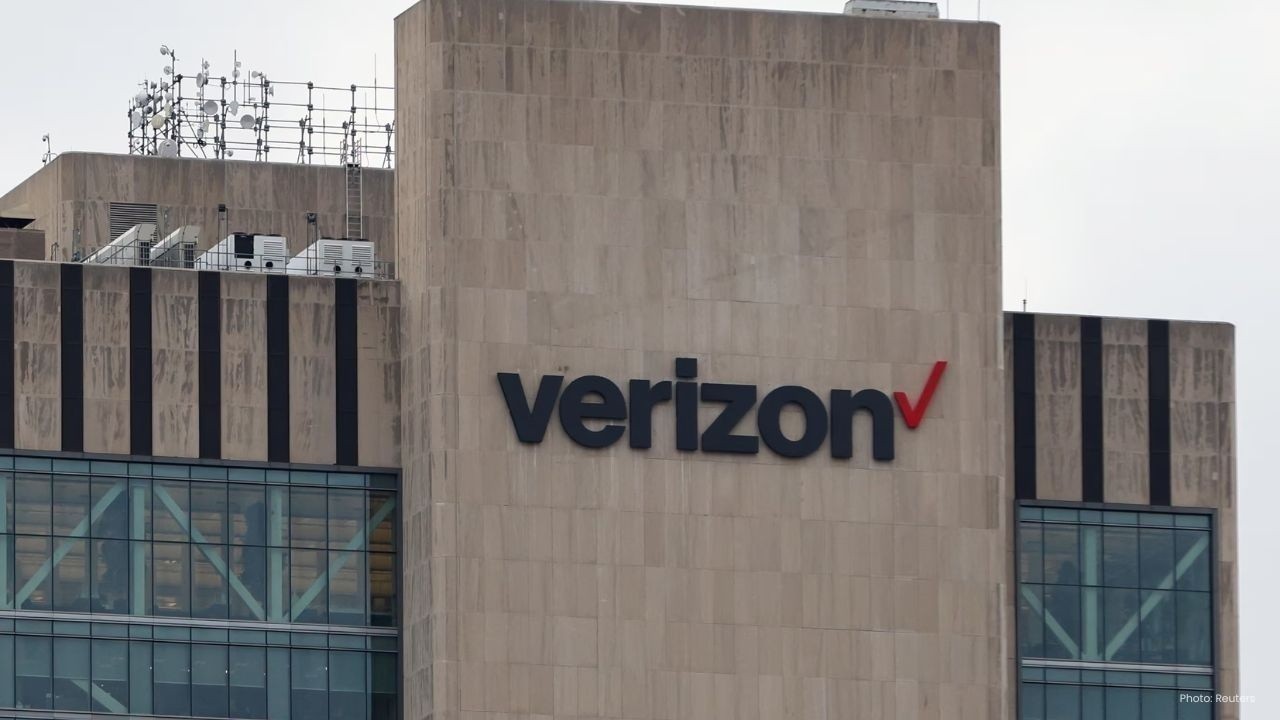
Post by : Anis Karim
Over the last few years, mood-tracking apps have quietly become a cultural fixture. They sit next to fitness trackers, habit builders, sleep monitors, step counters, and meditation tools — all dedicated to improving everyday well-being. With soft pastel colors, calming music, and friendly reminders, these apps encourage us to pause and reflect on how we feel, label emotions, and build awareness around our mental and emotional states.
For many users, they serve as a gentle emotional assistant — a digital journal that helps detect stress triggers, track mood patterns, and celebrate moments of positivity and calm. In a world where mental health conversations have moved from private clinics to dinner tables, workplace seminars, college campuses, and social media feeds, mood-tracking apps feel like the next natural step in personal wellness technology.
But here is the other side of the story: the very act of constantly monitoring your mood may sometimes make emotional ups and downs feel bigger, heavier, and more consuming than they truly are. Instead of becoming tools for relief, they can accidentally heighten stress, invite over-analysis, and amplify feelings of inadequacy or confusion.
This emerging paradox — where helpful technology can unintentionally deepen anxiety — is becoming an important subject in mental-wellbeing conversations. Understanding the fine line between self-awareness and self-obsession is crucial as emotional technology continues to expand into daily life.
People are more aware than ever about mental health. Concepts like mindfulness, emotional regulation, neurodiversity, and stress management have become part of everyday vocabulary. Mood-tracking apps promise to help users stay in tune with emotions, identify patterns, and improve self-care.
From counting calories to tracking steps and monitoring sleep cycles, society has embraced data-driven living. Emotions, once considered abstract and fluid, now feel like another metric that can be tracked, graphed, and optimized.
The pandemic changed work, social life, and mental balance. As routines collapsed, people found comfort in tools that offered structure and understanding during emotional turbulence.
Wellness influencers, mindfulness coaches, productivity gurus, and lifestyle bloggers increasingly recommend mood journaling, reflection prompts, and self-tracking as essential habits. Apps make that process consistent and convenient.
Regular logging can reveal patterns — maybe Mondays feel overwhelming, or social settings spike anxiety, or late-night screens disturb emotional balance. Recognizing triggers often leads to better emotional preparedness.
Labeling emotions can prevent bottling feelings. Writing down how one feels becomes a small moment of release — a safe digital vent.
With moods recorded over time, users may realize that bad days are part of a bigger picture, not permanent failures.
These apps introduce terms like stress cycles, mood arcs, motivation dips, gratitude practice, and inner dialogue, helping users better articulate emotional journeys.
All of this sounds positive — and in many cases, it genuinely is. But that doesn’t mean the system is perfect.
Checking your mood multiple times a day can create emotional hyper-vigilance. Instead of letting emotions pass naturally, users may become fixated on analyzing every shift:
“Why am I sad today?”
“What caused my dip in energy?”
“Was my week worse than last?”
“Why did my stress score rise?”
Constant scanning can transform normal human fluctuations into stress triggers.
Mood apps often reward “good moods” with positive graphics or streaks, while red marks or downward arrows signal “bad days.” This can create subconscious pressure to always feel good — an impossible expectation.
Emotions are complex, influenced by hormones, weather, sleep, diet, personal interactions, notifications, even traffic. Apps may oversimplify nuanced emotional waves into neat labels or scores, leading to confusion rather than clarity.
Instead of tuning into internal feeling organically, some users start relying on app prompts or color charts to tell them how they feel. Emotional intuition — a natural human skill — may weaken.
When someone logs sadness every day, the visual record of the emotion can reinforce a belief that things are not improving, even when fluctuations are normal.
A diary of difficult feelings may validate distress instead of encouraging movement beyond it.
If you miss logs, your streak breaks. You feel behind. Emotional reflection becomes another daily task — not an organic moment of introspection but a checkbox in digital self-discipline.
Constant attention to internal emotional states can heighten stress response and anxiety. Over-focus can magnify sensations rather than soothe them.
Labeling a feeling is not the same as understanding or resolving it. Apps can sometimes trap users in labeling loops.
People who already feel anxious may interpret neutral mood swings as negative trends. Apps that visualize moods amplify this effect through graphs and streaks.
Humans naturally look for patterns — sometimes even where none exist.
Perfectionists may interpret mood dips as personal failure.
Frequent check-ins can heighten nervousness and emotional sensitivity.
Instead of calming, apps might intensify focus on every emotional turn.
One or two thoughtful entries a day work better than minute-to-minute monitoring.
Instead of scoring emotions, journaling context and feelings in words may reduce judgment and improve clarity.
Better prompts include:
“What helped me today?”
“What drained my energy?”
“What am I grateful for?”
Not just “How do I feel and why?”
Not every moment needs emotional labeling. Sometimes life is just… normal. And normal is healthy.
When guided by professionals, it can support treatment plans.
For people learning emotional expression, apps help articulate feelings.
Short-term use can teach people to notice patterns before they return to instinctive emotional processing.
Future apps may understand:
Behavioral triggers
Habit patterns
Social context
Sensory inputs
Stress environment
Not just mood logs.
We may see systems that reward emotional balance rather than positivity streaks.
Apps may combine emotions with sleep cycles, heart patterns, movement, environment, and nutrition to form more realistic emotional insights.
User-centric designs that avoid pressure, gamification, and over-quantification may emerge.
Mood-tracking apps reflect a powerful desire: to know ourselves better, to manage feelings more mindfully, and to grow emotionally in a fast-paced world. At their best, they help us pause, acknowledge our feelings, and build emotional vocabulary.
However, when misuse or over-reliance creeps in, these tools can shape a subtle trap — where self-observation becomes self-critique, emotional awareness becomes emotional stress, and digital feedback replaces natural intuition.
The key is balance. Emotions are not always meant to be quantified; sometimes they are meant to be felt, lived, processed, and released without analysis. The goal of mental health is not perfect happiness charts — it is resilience, self-trust, and emotional flow.
Digital reflection is a tool. Human experience remains the truth.
This article offers general information and perspective on mood-tracking trends. It is not medical or psychological advice. Individuals with mental health concerns should seek support from qualified professionals.

Asian Chip Stocks Tumble Amid Nvidia-Led Market Pressure
Asian semiconductor stocks fell sharply Friday as Nvidia’s decline sparked a broad selloff, hitting

The Family Man Season 3 Review: Action-Packed Yet Mixed Response
Manoj Bajpayee returns in The Family Man S3. Season 3 ups the action but receives mixed reviews from

Mumbai Confirms Surya and Dube Availability for T20 Tournament
Suryakumar Yadav and Shivam Dube will play in Syed Mushtaq Ali Trophy. Mumbai squad prepares for Luc

Verizon to Cut 13,000 Jobs Amid Cost-Cutting Push
Verizon announces largest layoff of 13,000 jobs, shifts stores to franchise, and invests in AI-focus

Trump Plan to Expand Offshore Drilling Sparks Controversy in US Waters
The Trump administration proposes offshore drilling expansion in Alaska, West Coast, and Gulf, facin

Kazuma Okamoto and Kona Takahashi Enter MLB Posting System
Infielder Kazuma Okamoto and pitcher Kona Takahashi enter MLB posting system, giving teams a chance

US Sanctions Leave 48M Barrels of Russian Oil Stranded
Nearly 48M barrels of Russian crude risk being stranded at sea as new US sanctions disrupt global fl

Kazuma Okamoto and Kona Takahashi Enter MLB Posting System
Infielder Kazuma Okamoto and pitcher Kona Takahashi enter MLB posting system, giving teams a chance

Texans Defeat Bills 23-19 with Strong Defense and Touchdowns
Texans beat the Bills 23-19 as Davis Mills throws touchdowns and Houston's defense forces turnovers

Iraq Prepares for World Cup Playoffs Against Bolivia or Suriname
Iraq coach Graham Arnold urges team to stay positive as they prepare for intercontinental playoffs a

Uruguay Coach Bielsa Talks 5-1 Defeat Ahead of World Cup
Uruguay coach Marcelo Bielsa reacts to 5-1 defeat vs USA, assures team will continue preparations co

Italy Gears Up for Tough World Cup Playoff vs Northern Ireland
Italy will face Northern Ireland in the World Cup 2026 playoff. Gattuso aims to guide the team back

Messi vs Son: Exciting MLS 2026 Season Opener in Los Angeles
Messi’s Inter Miami meets Son Heung-Min’s LAFC on Feb 21 in a major MLS 2026 opener, with new stadiu

Spain, Germany Reach Davis Cup Semi-Finals After Big Comebacks
Spain and Germany advanced to the Davis Cup semi-finals after thrilling wins, setting up exciting cl

Frida Kahlo Painting Breaks Record, Sells for $55M at Auction
Frida Kahlo’s self-portrait sells for $55M, setting a new record for a woman artist at auction. Hist